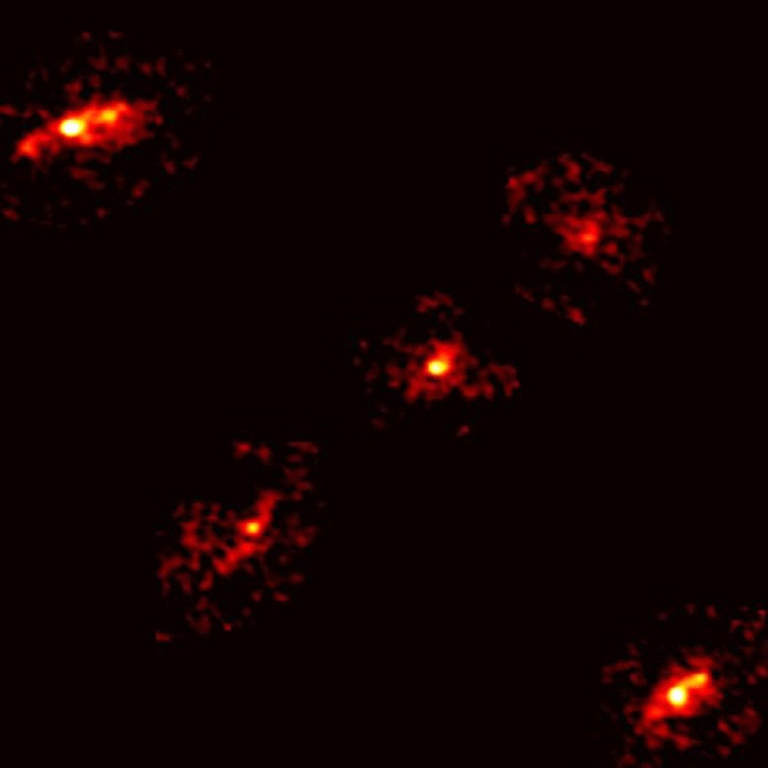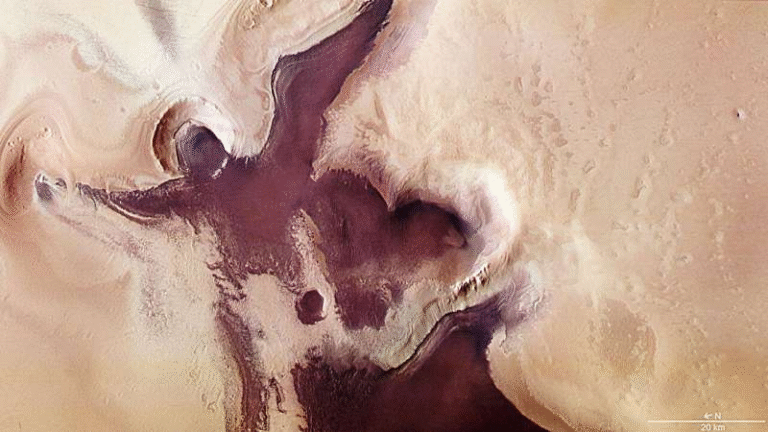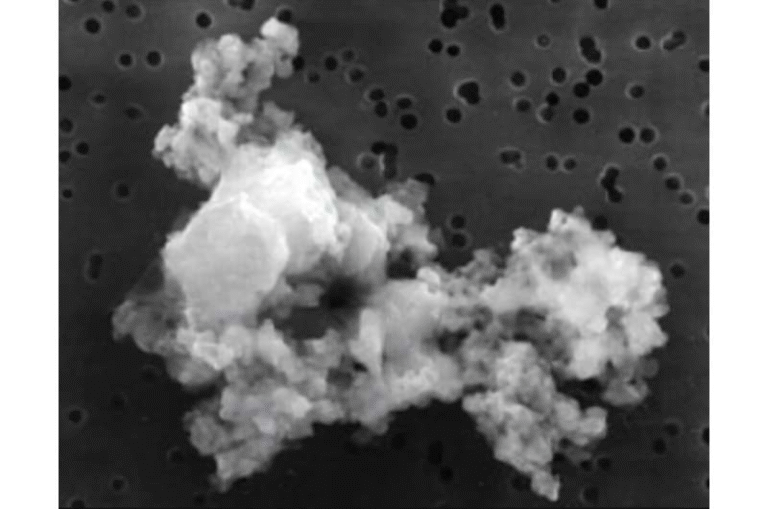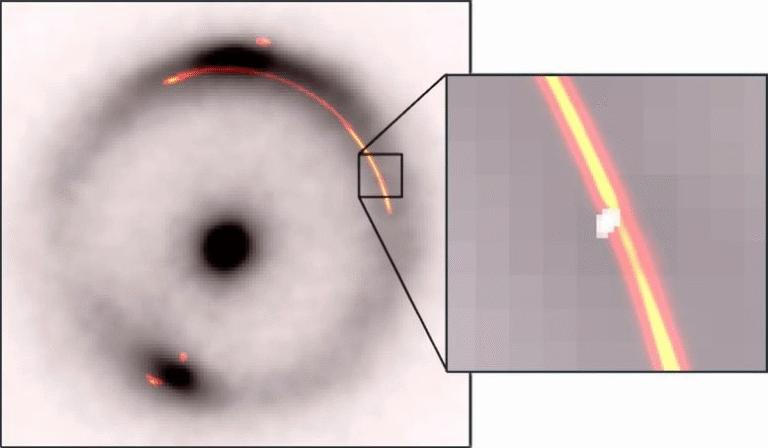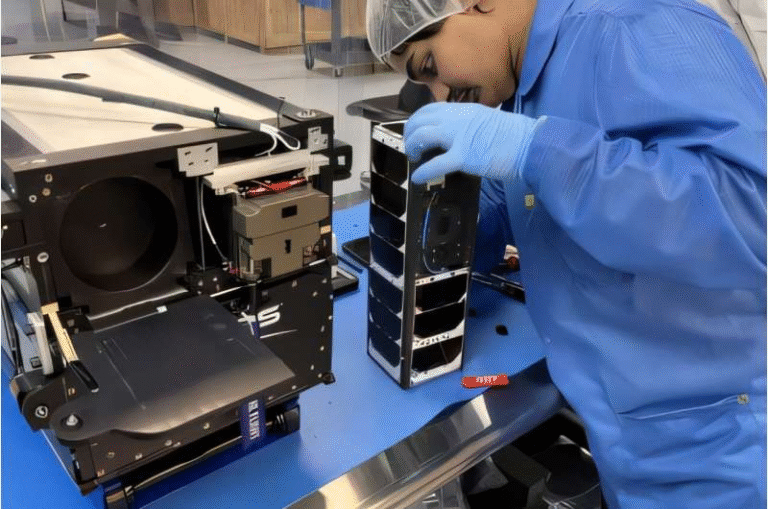Scientists Unlock the Mystery of the Sun’s Speediest Electrons

The Sun isn’t just a glowing ball of fire—it’s also the Solar System’s most powerful particle accelerator. For decades, scientists have puzzled over how streams of superfast electrons—particles moving close to the speed of light—get launched into space.
Thanks to the ESA and NASA Solar Orbiter mission, researchers have finally traced these electrons back to their origins on the Sun, solving a cosmic mystery that could also help keep our technology safe here on Earth.
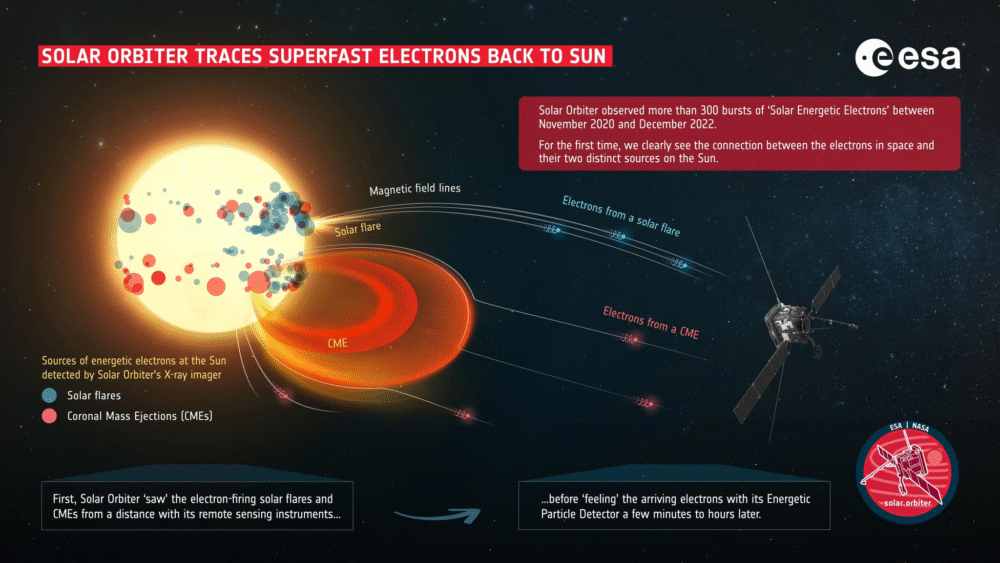
Two Ways the Sun Fires Electrons
The Solar Orbiter revealed that high-energy electrons, known as Solar Energetic Electrons (SEEs), don’t all come from the same type of solar outburst. Instead, there are two distinct categories:
- Solar flares: These are quick, impulsive bursts of energy erupting from smaller, active patches on the Sun’s surface. They fling electrons into space in sudden, sharp blasts.
- Coronal mass ejections (CMEs): These are massive eruptions of plasma from the Sun’s outer atmosphere. Unlike flares, they release electrons more gradually, sending waves of high-energy particles across the Solar System.
This distinction matters because while flares produce short-lived but intense particle events, CMEs generate longer-lasting floods of electrons—and those are the ones that can wreak havoc on satellites, spacecraft, and even power grids back on Earth.
How Solar Orbiter Cracked the Case
Between late 2020 and the end of 2022, the Solar Orbiter flew closer to the Sun than Mercury’s orbit, giving it a front-row seat to over 300 electron events. By using its suite of instruments, scientists could track electrons as they left the Sun and traveled through space.
What made the findings so groundbreaking is that the spacecraft didn’t just observe the electrons—it actually flew through the streams of particles. This let researchers connect what was happening on the Sun’s surface with what they were directly measuring in space.
For the first time, scientists could see the clear link between solar outbursts and the electron populations racing into the Solar System.
Why the Delay?
Interestingly, there’s often a time lag between seeing a solar flare or CME on the Sun and detecting the electrons in space. Sometimes, it takes hours before those particles are spotted.

On November 19, 2022, ESA’s Solar Orbiter observed a powerful coronal mass ejection (CME) — a colossal eruption that hurls billions of tonnes of plasma and magnetic fields from the Sun’s outer atmosphere. The Metis instrument, which simulates a total solar eclipse by blocking the Sun’s bright disc, makes it possible to image the faint outer layers. In this movie, the Sun’s position and size are represented by the white circle.
Credit: ESA & NASA/Solar Orbiter/Metis
Researchers discovered that this isn’t just about late release from the Sun. Instead, as electrons zoom through space, they get caught in turbulence and tangled magnetic fields carried along by the solar wind. This scattering effect delays their arrival, making them tricky to predict.
Why It Matters for Earth
This discovery isn’t just about curiosity—it’s about space weather forecasting. Understanding whether an electron event comes from a flare or a CME is critical. CMEs in particular carry more energy and pose greater risks, especially to astronauts, satellites, and communication systems.
By learning to distinguish between the two types of SEE events, scientists can develop better warnings for potentially dangerous space weather. This kind of forecasting is becoming more important as our reliance on satellites and space-based technology grows.
Looking to the Future
Solar Orbiter’s success is only the beginning. In 2026, ESA’s Smile mission will launch to study how Earth’s magnetic field shields us from solar storms. Later, in 2031, ESA will launch Vigil, a mission designed to keep a constant eye on the “side” of the Sun, spotting dangerous eruptions before they rotate into Earth’s path.
Together, these missions will expand our understanding of the Sun-Earth connection and help protect both astronauts and technology from harmful radiation.
A Bright Step Forward
Thanks to Solar Orbiter, scientists can finally say with confidence how the Sun’s fastest electrons are born and unleashed. It’s a discovery that not only satisfies human curiosity about our star but also strengthens our ability to live safely in a space-powered world.

